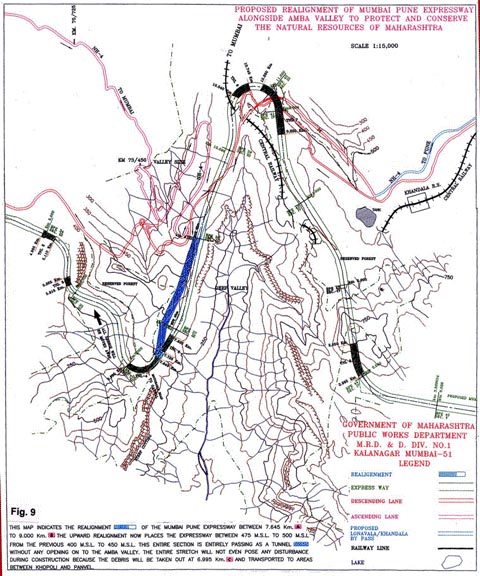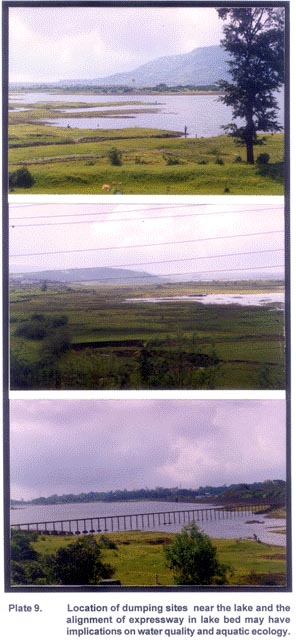Construction of tunnels
|
The proposed Mumbai - Pune Expressway passes through the Konkan plains and then cuts across the Western Ghat escarpment, further beyond, it is aligned along a gentle gradient in the non - Ghat section upto Pune. In the Western Ghat section, the expressway alignment may lead to major impacts of clearing of crestline forests and the grasslands of the Deccan plateau. Unless the tunnels in this region are constructed to align the expressway to skirt the forests, the fragmentation of the landscape, the only corridor that connects North - South forest habitats would be inevitable. Eight tunnels have been proposed through the hilly section of the Ghat area (Fig. 9).
The construction of tunnels at locations in Santapau, Ulhas and Amba valleys can be effective in reducing the direct physical destruction of the ecological values of the valley ecosystems provided the following secondary impacts of the tunneling technology and design are carefully considered. i. The disposal of the excavated rocky material on the down slope in the valley has been a practice which has been adopted in most tunneling projects. Evidence of this can also be seen in the valley areas close to the existing tunnel on the NH-4 route. The excavated rocks from this tunnel which must have been constructed several decades ago still form an impervious cover on the soil layer of the valley leading to denudation of tree and grass cover (Plate 8). This practice will not be acceptable during the construction of tunnels under the Mumbai-Pune Expressway project specially considering that the project envisages construction of 9 tunnels and an estimated amount of approx. 2.13 lakh m3 of rock and earth shall be excavated out from the site of which 80 to 90% will be in the form of rock (RITES and SWK, 1995). ii. The suitable dumping sites for excavated material should be carefully identified to prevent erosion of soil or siltation of water bodies in the vicinity.
Three sites for dumping of the waste rock have been identified one each at Honod (270 ha), Pimpoli (17 ha) and close to Lonavale lake (19 ha). The site near Lonavale lake is not recommended for dumping of excavated material on account of its proximity to waterbody and the likely impacts of leachetes from the dumping material finding their way into the lake which is the only source of drinking water to neighbouring townships (Plate 9). The technological options for construction of tunnel may however still not be able to arrest the impacts related to ground vibrations and noise during rock cutting, erosion of soil from exposed surfaces and the changes brought about in the soil moisture regimes.
|
Last Updated: October 9, 2015












